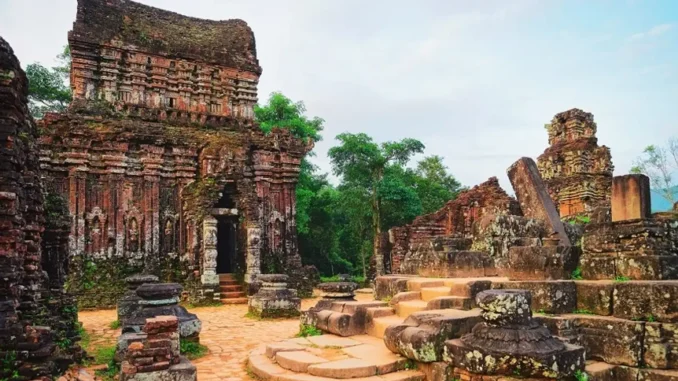
Between the 4th and 13th centuries, a unique culture that owed its spiritual origins to Indian Hinduism developed on the coast of contemporary Vietnam. This is graphically illustrated by the remains of a series of impressive tower temples located in a dramatic site that was the religious and political capital of the Champa Kingdom for most of its existence.
Location
My Son Sanctuary comprises several ancient Cham temples spreading across a 2-kilometer-wide valley surrounded by hills and mountains. Although time and war severely damaged these relics, what remains in My Son plays an important role in world history and culture.
Address: Duy Phu commune, Duy Xuyen district, Quang Nam province, located 69km from Da Nang city and 45km from Hoi An ancient town.
History
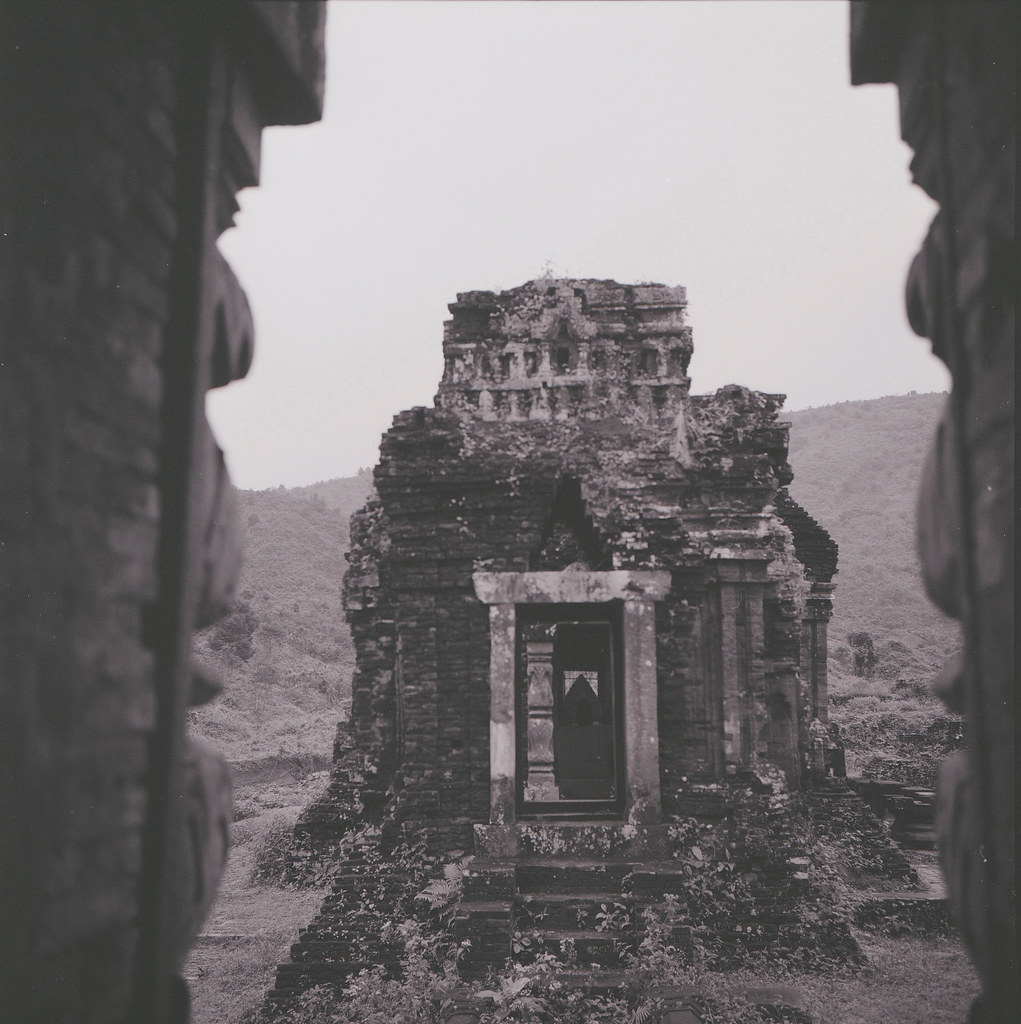
My Son Sanctuary is known as an architectural complex of ancient temples and towers built by the Champa people. According to historical information, My Son Sanctuary tourist area was built around the 4th century, with more than 70 temples and towers built from the 7th to 13th centuries. In the past, this was the land to worship gods and a place of refuge if the capital, Tra Kieu was invaded. The predecessor of the sanctuary was a temple made of wood, the main purpose of which was to worship the god Diva Bhadresvera. By the end of the sixth century, the temple had been burned down. Until the 7th century, King Sambhuvarman used the same bricks to start rebuilding, and that is also the relic that has been preserved to this day.
Subsequent dynasties continued to repair old temples and towers while building new temples and towers. In 1898, a French scholar traveled to Vietnam and discovered the My Son holy site. Thanks to the inscriptions, along with the development through the dynasties, research has shown that My Son was an extremely important holy place of the Cham people from the 6th century to the 15th century.
Architecture
Most of the architectural styles of the Cham are present at My Son, and the tower temples at My Son themselves create the basic criteria for identifying the Cham architectural style. My Son Sanctuary is considered significantly unique and rare among Cham towers’ architectural forms. Visitors will be amazed by the towers at My Son. There are walls, yards, and roads linking the towers together in groups, with the main temple in the center. My Son Sanctuary is known as a famous construction of the Champa kingdom, with many temples with unique architecture.
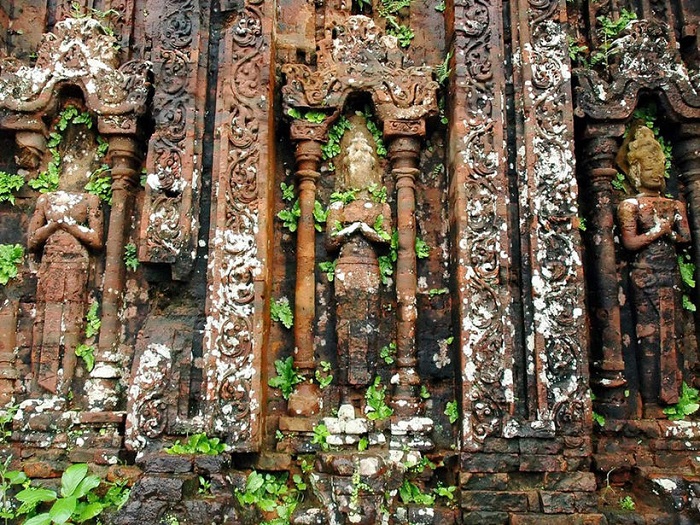
According to statistics, there are more than 70 architectural works made of brick and stone, built from the 7th to the 13th centuries. The most prominent feature inside My Son is the main temples; each temple has its unique structure. Worship a set of Linga or an image of Siva – the guardian deity of the ancient Champa kings. Each historical period has its mark; each temple tower worships different gods and dynasties of kings, together creating unique architecture like today. However, in general, My Son is built on a quadrilateral plane, divided into 3 parts, the base of the tower, the body of the tower, and the top part, all of which symbolize a certain meaning.
Highlights of My Son Sanctuary
Ancient Cham architecture
Apart from religious features, the most captivating aspect of My Son Sanctuary is its unique Cham style of architecture, which was heavily influenced by Indian style. The Cham towers were all built on quadrilateral foundations and each comprised three parts
– A sturdy tower foundation: representing the mortal world;
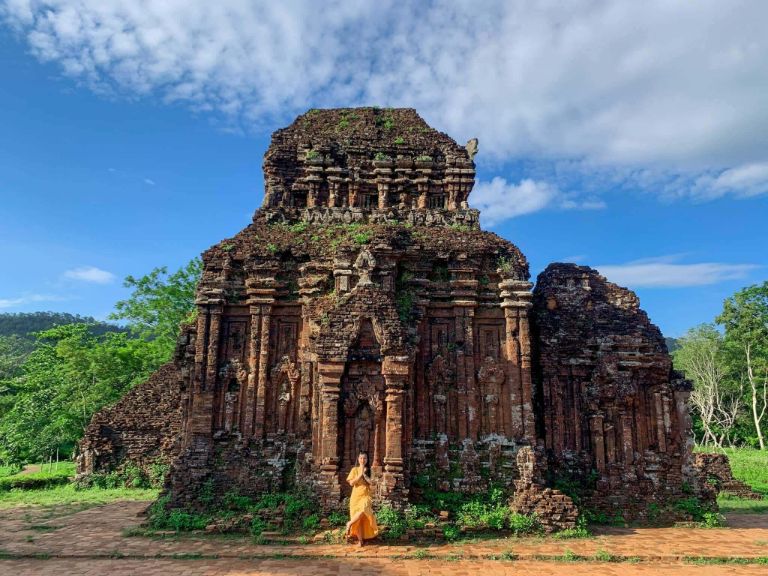
– The enigmatic and sacred tower body: representing the spirit world;
– The tower top (shaped like a man offering flowers and fruits, or trees, birds, animals, and so on): represents things that are close to spirits and human beings.
My Son Sanctuary Museum
Here, you will get general information about My Son’s relics and culture. Inside the museum, many posters and pictures explain the history of My Son Sanctuary, which will be extremely useful.
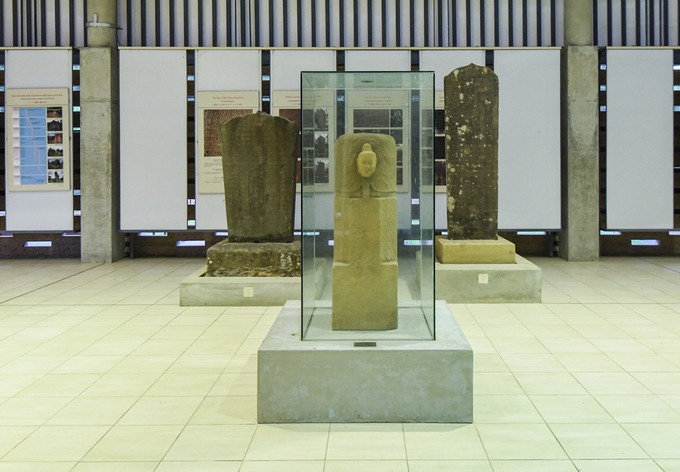
Inspiring Apsara dance
Aside from breathtaking architectural art, you will enjoy the graceful traditional Cham dances. Every day in the afternoon, the dances are performed.
Local dancers perform the dances, which vary from Cham’s iconic Shiva and Aspara dances that date back hundreds of years to joyful fan dances and water dances. Each dance is unique, creating a sparkling and fanciful Champa cultural space. It is an awe-inspiring experience: to enjoy the local dancers’ flexibility and attractiveness while listening to folk music in a sacred space.
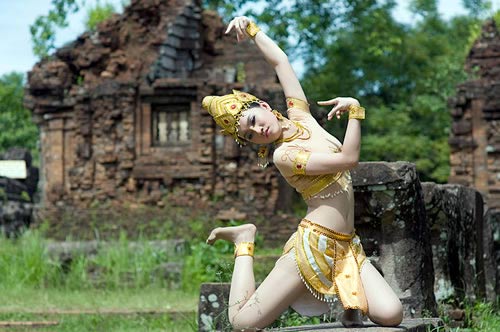
Kate festival
The modern Cham people celebrate the Kate festival, or Mbang Kate, for three days in early October. It is the Cham people’s most important event for commemorating their heroes and late-lamented families. This festival also serves as the largest gathering of the locals, allowing them to share their joy and wish each other good fortune.
The vibrant colors of the traditional outfits worn by the locals will dazzle you. The symphonic traditional songs and passionate dances will captivate you. Attend the miraculous Kate festival to experience the surreal Cham atmosphere from thousands of years ago.
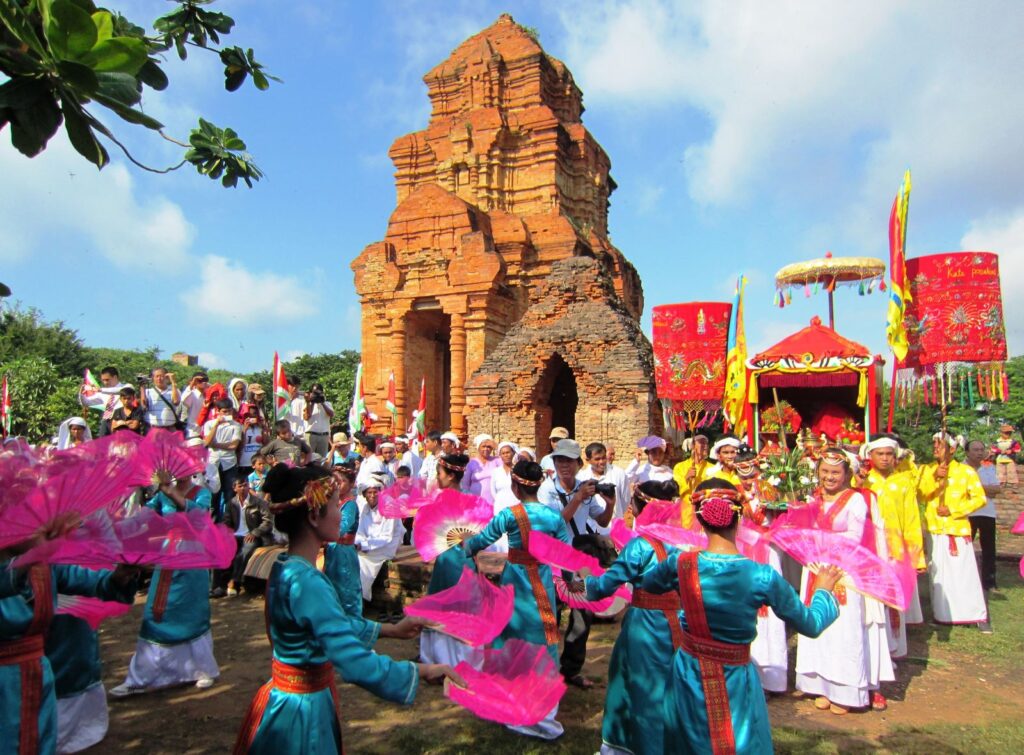
Architecture
My Son Sanctuary was recognized by UNESCO as a World Cultural Heritage in 1999. This is a particularly important national monument and the most famous, sacred, and attractive tourist destination of Quang Nam.
My Son Sanctuary is considered one of the main temple centers of Hinduism in Southeast Asia and is the only heritage site of this type in Vietnam.
Get an opportunity to visit World Heritage Sites in Vietnam through Vietnam E-Visa!